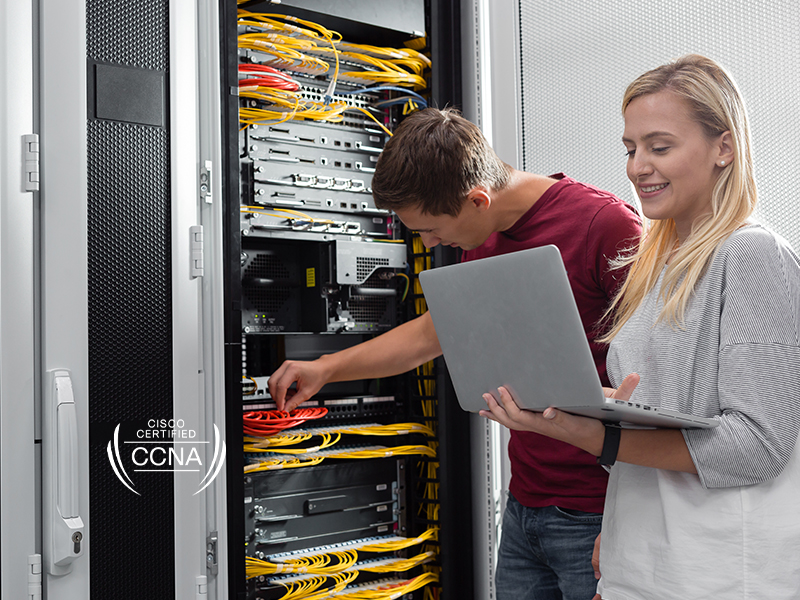The Implementing and Administering Cisco Solutions (CCNA) course provides comprehensive training for network administrators, covering key concepts like IPv4 and IPv6 network addressing, VLANs, OSPF, and device hardening. You'll gain hands-on experience with Cisco IOS Software, static routing, and system monitoring. This CCNA Cisco training prepares you to implement and manage modern networks with a focus on security and automation. Enroll in this CCNA v2.1 course to advance your skills in network management and connectivity.
-
Identify the components of a computer network and describe their basic characteristics
-
Understand the model of host-to-host communication
-
Describe the features and functions of the Cisco IOS Software
-
Describe LANs and the role of switches within LANs
-
Describe Ethernet as the network access layer of transmission control protocol and the internet protocol (TCP/IP) and describe the operation of switches
-
Install a switch and perform the initial configuration
-
Describe the TCP/IP internet layer, IPv4, its addressing scheme, and subnetting
-
Describe the TCP/IP transport layer and application layer
-
Explore the functions of routing
-
Implement basic configuration on a Cisco router
-
Explain host-to-host communications across switches and routers
-
Identify and resolve common switched network issues and common problems associated with IPv4 addressing
-
Describe IPv6 main features, addresses and configure and verify basic IPv6 connectivity
-
Describe the operation, benefits, and limitations of static routing
-
Describe, implement and verify virtual local area networks (VLANs) and trunks
-
Describe the application and configuration of inter-VLAN routing
-
Explain the basics of dynamic routing protocols and describe components and terms of open shortest path first (OSPF)
-
Explain how spanning tree protocol (STP) and rapid spanning tree protocol (RSTP) work
-
Configure link aggregation using EtherChannel
-
Describe the purpose of Layer 3 redundancy protocols
-
Describe basic wide-area network (WAN) and virtual private network (VPN) concepts
-
Describe the operation of access control lists (ACLs) and their applications in the network
-
Configure internet access using dynamic host configuration protocol (DHCP) clients and explain and configure network address translation (NAT) on Cisco routers
-
Describe the basic quality of service (QoS) concepts
-
Describe the concepts of wireless networks, which types of wireless networks can be built and how to use WLC
-
Describe network and device architectures and introduce virtualization
-
Explain software-defined networks
-
Configure basic Cisco IOS system monitoring tools
-
Describe the management of Cisco devices
-
Describe the current security threat landscape
-
Describe threat defense technologies
-
Implement a basic security configuration of the device management plane
-
Implement basic steps to harden network devices
-
Discuss the need of network programmability in Enterprise networks, common programmability protocols, and configuration management tools
-
Describe AI and ML in network operations






